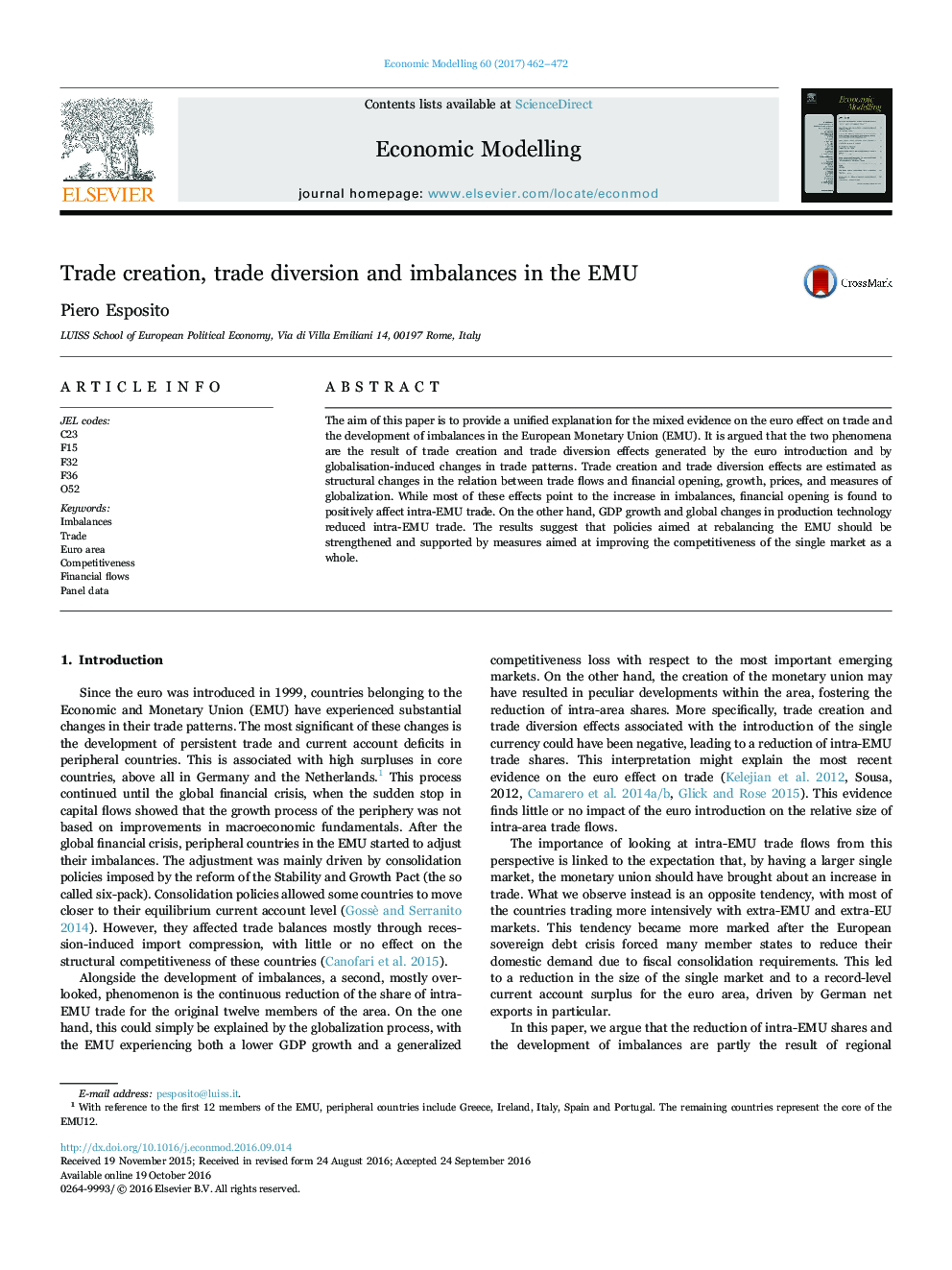| Article ID | Journal | Published Year | Pages | File Type |
|---|---|---|---|---|
| 5053221 | Economic Modelling | 2017 | 11 Pages |
â¢Provide economic interpretation for the mixed evidence on the euro effect on trade.â¢Heterogeneous trade creation and trade diversion effects are linked to imbalances.â¢Financial opening increased intra-EMU trade and fostered imbalances.â¢Growth and globalization forces reduced intra-EMU trade and increased imbalances.â¢EU policies to improve competitiveness in the internal market should be strengthened.
The aim of this paper is to provide a unified explanation for the mixed evidence on the euro effect on trade and the development of imbalances in the European Monetary Union (EMU). It is argued that the two phenomena are the result of trade creation and trade diversion effects generated by the euro introduction and by globalisation-induced changes in trade patterns. Trade creation and trade diversion effects are estimated as structural changes in the relation between trade flows and financial opening, growth, prices, and measures of globalization. While most of these effects point to the increase in imbalances, financial opening is found to positively affect intra-EMU trade. On the other hand, GDP growth and global changes in production technology reduced intra-EMU trade. The results suggest that policies aimed at rebalancing the EMU should be strengthened and supported by measures aimed at improving the competitiveness of the single market as a whole.
